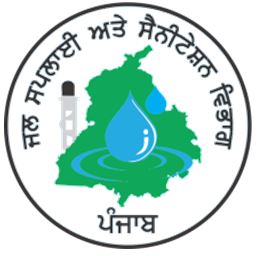Thrust Area
Punjab is situated in the North West of India and it is bordered by Pakistan on the West, the Indian States of Jammu and Kashmir on the North, Himachal on its Northeast and Haryana and Rajasthan to its South. The State is spread over an area of 50,362 square kilometers (Punjab occupies 1.54% of the country’s total geographical area). The Capital of Punjab is Chandigarh. The State has a total population of 277 lakh as per Census 2011 out of which male population is 146 lakh whereas the female population is 131 lakh. There are 12581 villages and 143 towns (2011 Census). The Administrative Structure of the state consists of 4 Divisions, 22 Districts and 142 Blocks.
In the Northern and Central districts of the state, potable water is available in shallow / deep aquifers but shallow aquifers are not suitable for drinking due to the possibility of contamination by the discharge of untreated industrial / polluted waste water. In the Southern Districts of the state, the underground water is unsafe for drinking. The high concentration level of fluorides contributes to a high incidence of fluorosis in these areas. Drinking water in the southern districts is only available from the existing irrigation canals of the Indus River System. Since the supply of canal water is not assured all the 365 days a year, therefore water storage is necessary to achieve the regular water supply. In addition, the irrigation canal water carries high turbidity that necessitates pretreatment for filtration. Reverse Osmosis/ Defluoridation Plants are also being installed to ensure availability of potable water for drinking and cooking purposes in the villages where:
i. Existing canal based water works are located at the tail end of canal network, resulting in shortage of raw water for many days in a year.
ii. Tube-well based sources contains:
a) TDS/ Floride etc. more than the desirable limit.
b) Uranium/ others heavy metals also more than permissible limits.
The existing water supply schemes are designed to provide 70 liters per capita per day potable water for prospective population of 15 years. The rural population depends on ground water/canal water to satisfy its need of drinking water for human and live stock consumption.
A habitation which fulfills the following criteria may be categorized as a Not Covered (NC) / No Safe Source (NSS) habitation:
The drinking water source/point does not exist within 1.6 km of the habitations in plains or 100 meter elevation in hilly areas. The source/ point may either be public or private in nature. However, habitations drawings drinking water from a private source may be deemed as covered only when the water is safe, available in adequate quantity and, is accessible to all.
Habitations which have water sources but are affected with quality problems such as excess salinity, iron, fluoride, arsenic or other toxic elements or biologically contaminated.
Habitation where the quantum of availability of safe water from any source is not enough to meet drinking & cooking needs.
Hence, in case of quality affected habitations, even if they are fully covered as per the earlier norms it would be considered as a NSS habitation if it does not provide safe water, at least for the purpose of drinking and cooking.
Habitation which have a safe drinking water source/point (either private or public) within 1.6km in plains and 100 meter in hill areas but the capacity of the system ranges between 10 lpcd to 40 lpcd, the habitation could be categorised as “Partially Covered (PC)”. These habitations whould, however, be considered as “Safe Source (SS)” habitations, subject to the water quality parameters.
All the remaining habitations may be categorised as “Fully Covered (FC)”.


